2014 may have been the 3rd drought year in a row for California, but I did get around enough to see a few first-time-for-me native species that weren't sad, dry and fried. Here are 8 of my favorites that didn't happen to make it into previous posts.
First up - on an April trip to Mono County, I caught Desert Peach, Prunus andersonii, in full bloom:
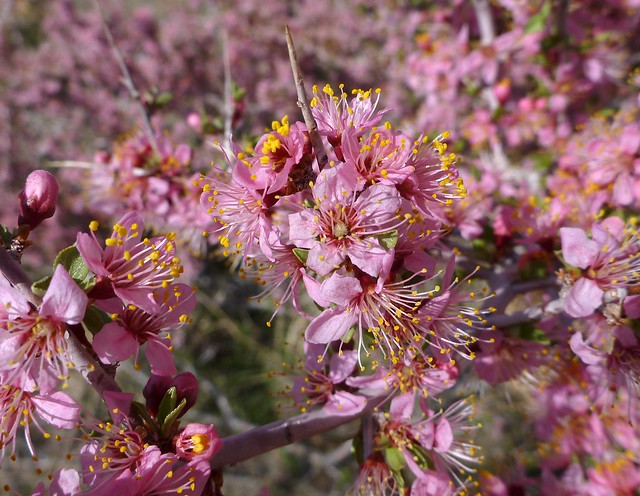
As you can see, it resembles the closely-related Japanese Cherry Blossom tree, even when light pink, such as this one along highway 395 near Lee Vining:
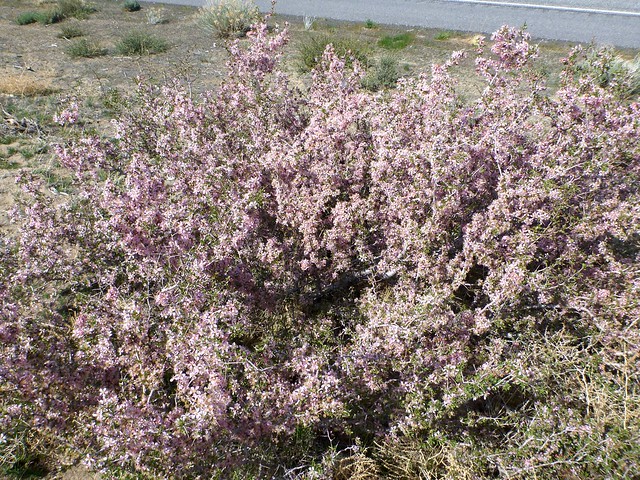
But unlike the familiar urban and suburban cherry trees, desert peach is a shrub that blooms soon after snowmelt in California's mountains and passes, so is often hard to catch in full glory. And being a desert-adapted species, it doesn't always go to fruit - but I caught that in 2014 as well:
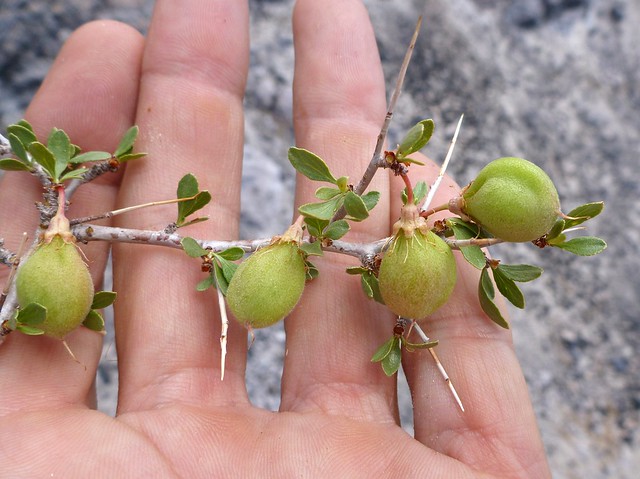
Next, on the sacred Mount Umunhum, above Santa Clara Valley, I was introduced to a very charismatic rock-loving buckwheat, Eriogonum saxatile, called Hoary Buckwheat:
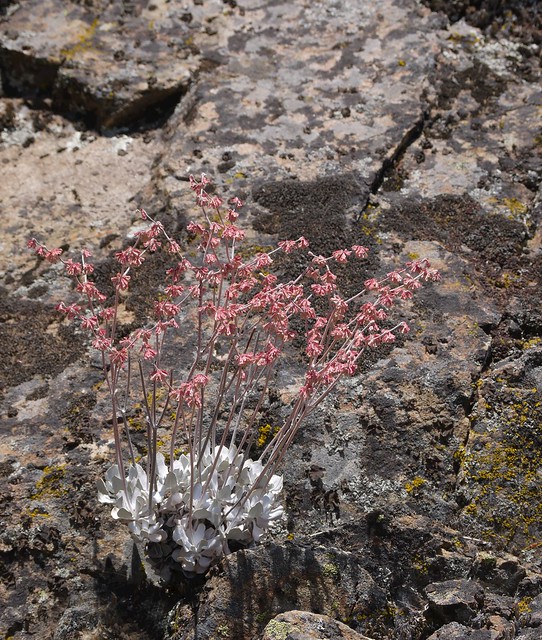
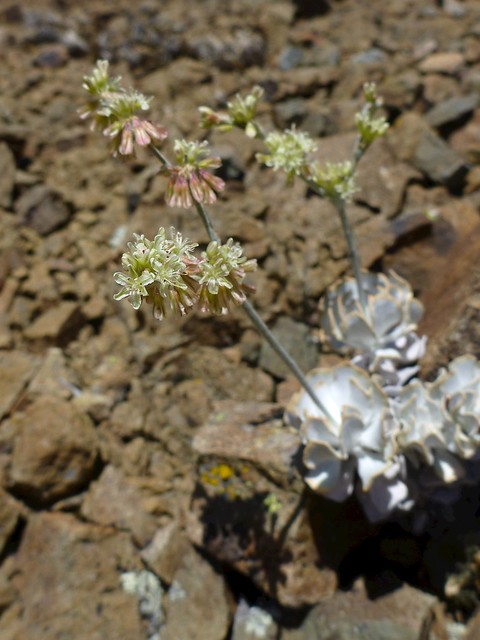
The flowers both vary in color and fade as they age, giving populations a range of eye-pleasing hues. But even the clusters of basal leaves, with their namesake hoary-frosted look, are striking:
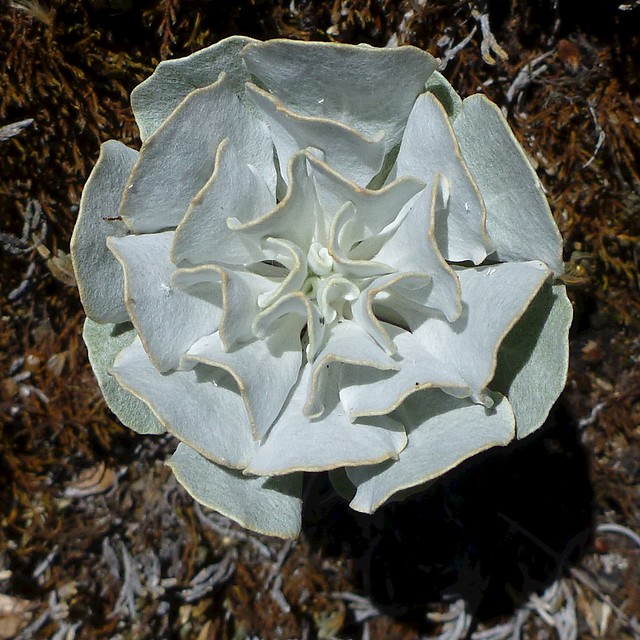
Further north, in Mendocino County, I enjoyed the blush of another species of Mariposa Lily, Calochortus vestae, the Coast Range Mariposa:
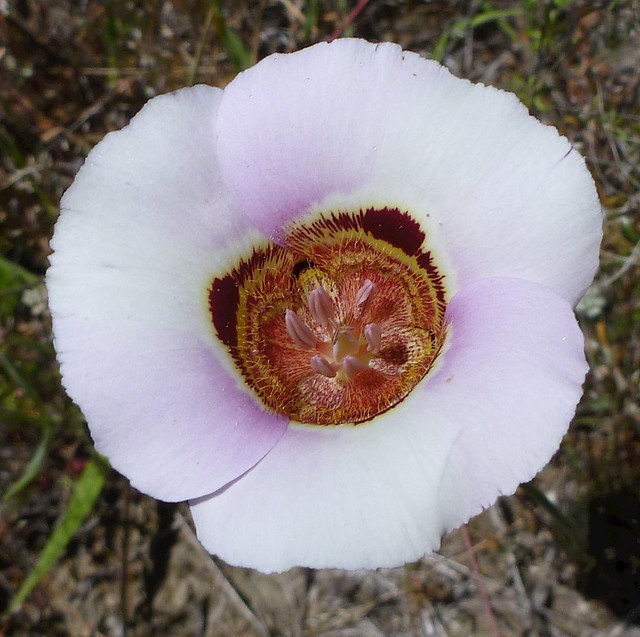
And along the Yuba River, and while on a drive across Yosemite, I saw 3 new-for-me Sierran species that struck my fancy - Woodland Wire Lettuce, Stephanomeria lactucina, Sierra Prettyface, Triteleia montana, and Rothrock's Fiddleleaf, Nama rothrockii:
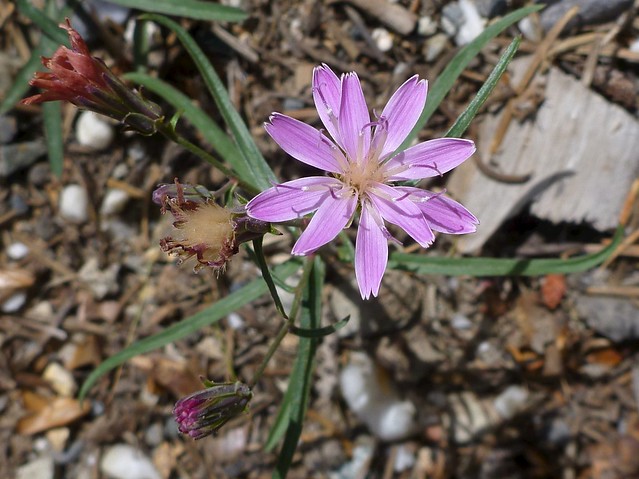
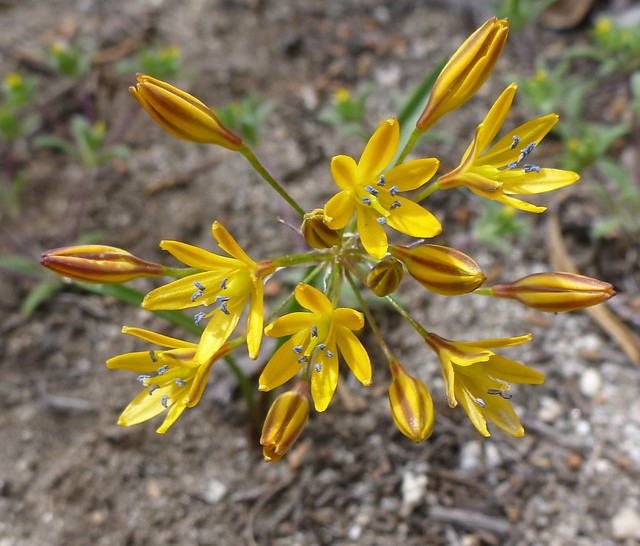
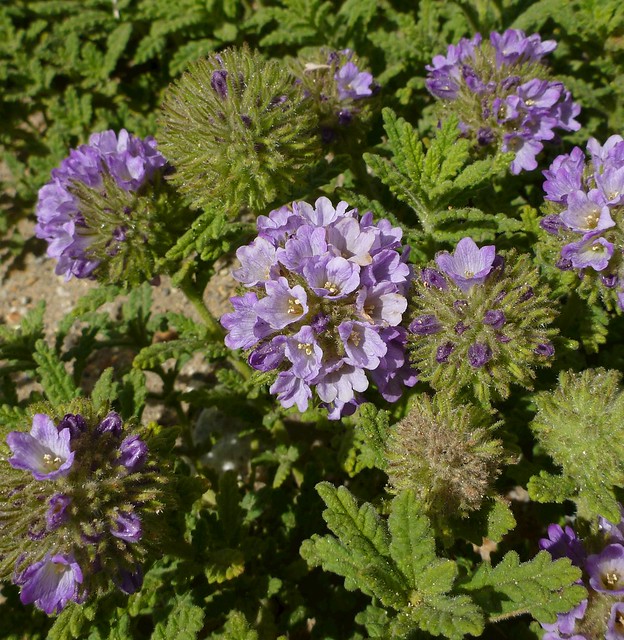
Around the edge of an alkali wetland in Mono County, we were treated to charming patches of Parish's Popcornflower, Plagiobothrys parishii, a rare Rank 1B.1 California endemic:
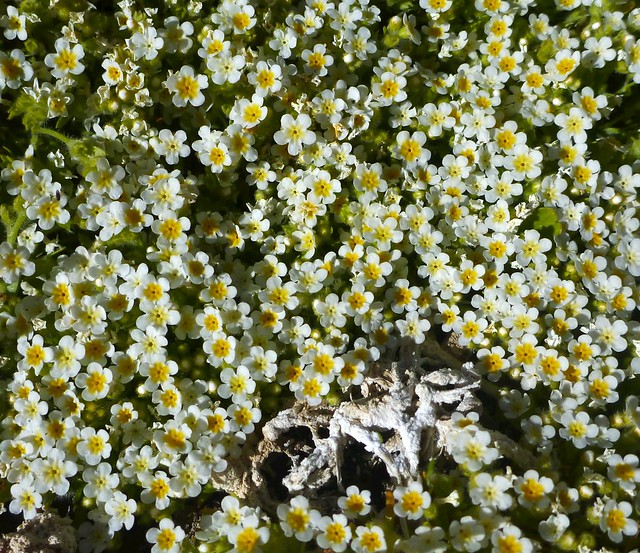
And, last - in Short Canyon, an oasis in the West Mojave, I saw some very hardy, scraggly and pointy Desert Oaks, also called Palmer Oak, Quercus palmeri - a true desert survivor:
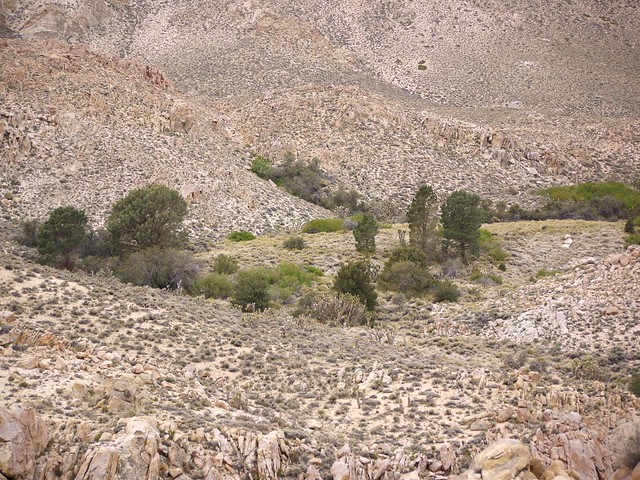
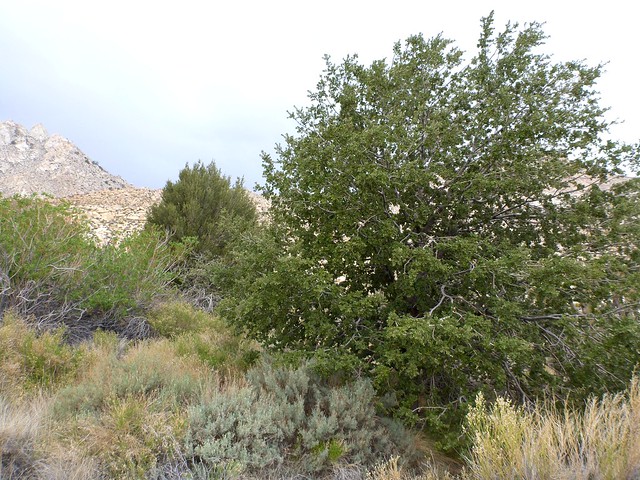
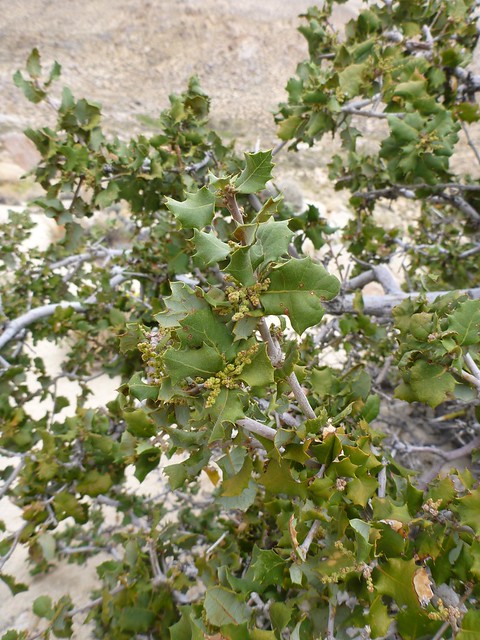
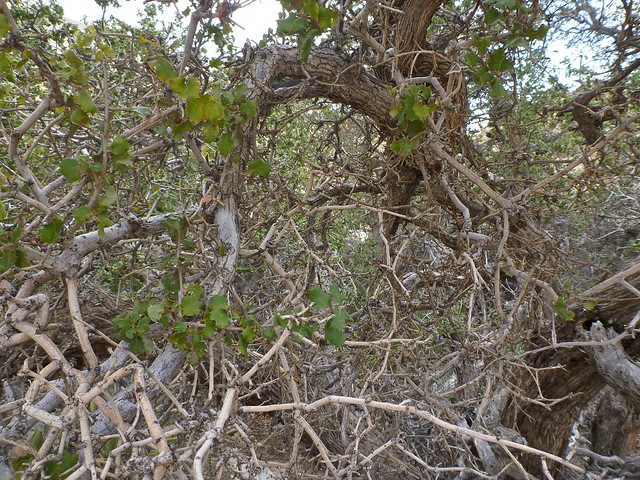
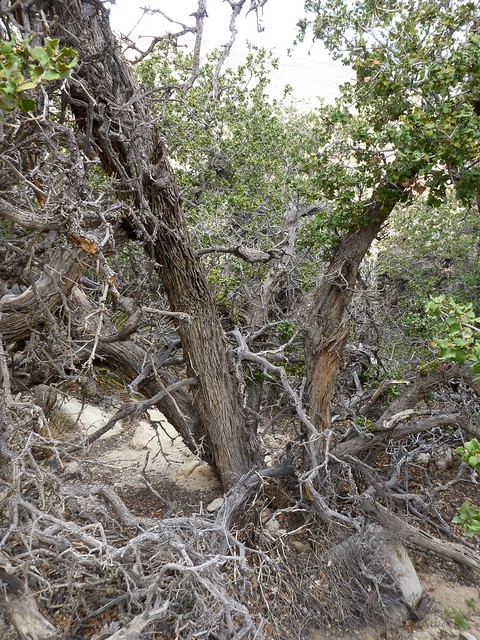
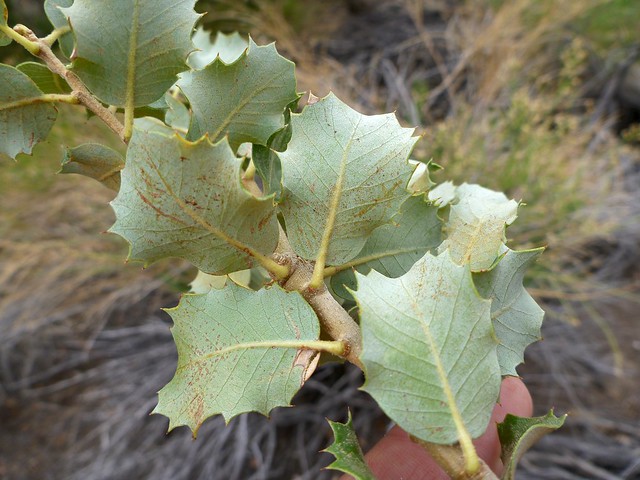
Now on to 2015.
Happy New Year!
====
References:
- The Jepson Manual of Vascular Plants of CA, and Jepson Online Interchange
- California Native Plant Society (CNPS)
- CNPS Santa Clara Valley Chapter
- CNPS - Rare Plant Program and Ranking System
- Calflora.org
- Nature of a Man (this blog) - Walking on Glass
- Nature of a Man (this blog) - Let's Get Small!
- Nature of a Man (this blog) - Panaminty Fresh
- Nature of a Man (this blog) - Fave Flora Seen in 2013
- Nature of a Man (this blog) - Backyard Beauties of 2012
- Nature of a Man (this blog) - Fave Flora of 2011

Lovely series of photos. Happy New Year. :)
ReplyDeleteI agree that the eriogonum is charismatic, especially the leaves. Wow, what a beautiful rosette!
ReplyDeleteBest wishes in 2015
Love that buckwheat
ReplyDelete